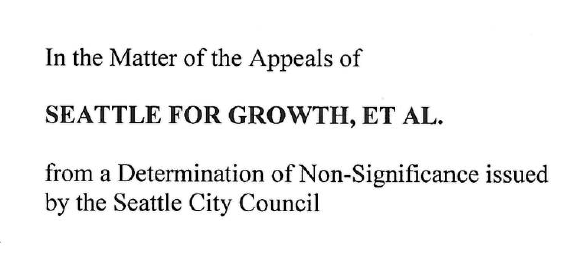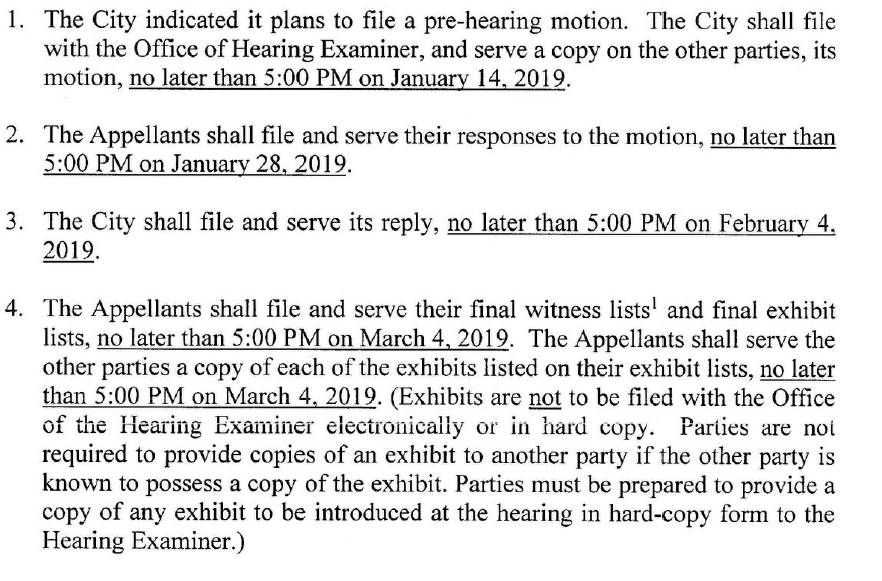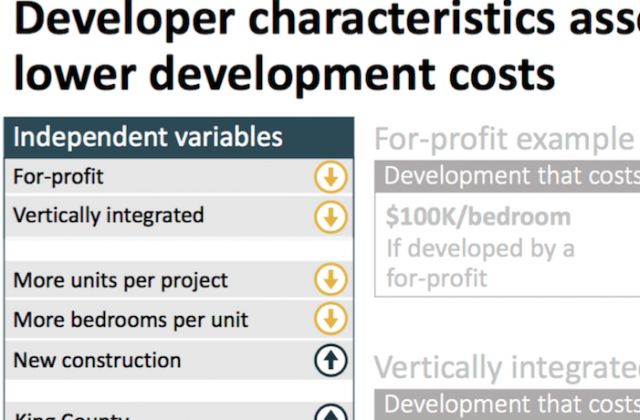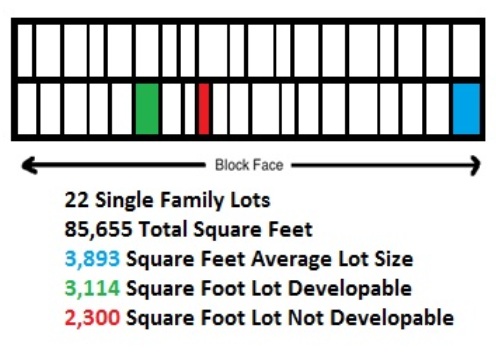Seattle For Growth Et Al : Our Appeal of Impact Fees is now Scheduled
It’s probably because I am a geek, but I love seeing “Seattle for Growth ET AL” at the top of our appeal. Because we filed first, the case has our name on it. Even better, a group called the Seattle Mobility Coalition has filed an appeal too and they have a top notch attorney. I’ve already shared the appeal language in another post. But now the appeal is officially underway. Rather than copy the schedule you can see an image of what we came to agreement on yesterday.
The actual hearing will begin on the 18th. The City is being a bit aggressive in their defense, at least in my view. They’ve suggested they want to depose (interview) our witnesses. This is a bit unusual.
I maintain that this is purely a political effort on the part of Councilmembers up for election. This whole effort seems rushed and is being led solely by the City Council. Usually this kind of proposal originates from the the Mayor and includes everything, comp plan amendments, legislation, and the Determination of Non-Significance (DNS). This has all the hallmarks of an election year effort, not unlike President Trump’s promise of a “a beautiful wall,” to convince angry neighbors that the Council is working on building a wall…I mean, imposing fees on new housing to prevent it from being built.
Anyway, we’ll sort all that out next year. As Trump also says, “We’ll see what happens.”
A Voice in the Wilderness: Another Letter to the Mayor and Council on MHA
I thought the Seattle City Council needed at least one more record of dissent about the imposition of their Mandatory Housing Affordability (MHA) scheme on the whole city. I sent this letter after my editorial appeared in the Seattle Times. It is the season of Advent, an observance of waiting and reflection before Christmas that features John the Baptist prominently. If you’re patient enough to read to the end (which I am sure all 9 Councilmembers did) you’ll find my reference to John in the Gospel of Luke. While John paves the way for the arrival of ministry of Christ, things don’t turn out so well for him (see the featured image). One can hope at this holiday time that perhaps the Mayor and Council will come to their senses and consider another way. Along with this famous image from Caravaggio you might enjoy one of my favorite hymns of Advent, “On Jordan’s Bank the Baptist’s Cry” while you read.
Mayor Durkan and Councilmembers,
I hope you’ll take some time and read my Op-Ed in the Seattle Times and this wordy email.
Here’s a link to the Op-Ed: https://www.seattletimes.com/
Having overcome the neighborhood challenge to your proposed Mandatory Housing Affordability (MHA) program, I see you set an aggressive schedule to impose it citywide.
That would be a mistake and disastrous for the city’s housing economy and for your legacy in the future. Most important, it won’t solve the problem of rising housing prices.
First, you simply cannot reduce housing prices by adding costs to the production of housing. This is an elementary point you have stubbornly ignored. While you may reassure yourselves that MHA will “work,” if you have any awareness of basic economics you must know that it will make many projects infeasible. Already, I hear frequently from builders and developers who are worried that they will not be able to make projects work. That means less housing production, less supply, and more hardships for people who need housing.
Second, when prices rise high enough to pay for fees, building will begin again. We’ve seen in Portland that an MHA program caused a halt in development. That will happen here. However, your constituents, in the end, will be paying for the fees with higher rents. Does that make sense? How does siphoning money from the pockets of hard working people to pay for a small number of subsidized units for other hard working people make sense to you? Yes, prices are falling at the moment. But that means this program makes even less sense. Falling prices mean it is less likely many projects will get built.
Third, what you’re doing is plainly illegal (see this letter from 2015) and will be overturned — eventually. Contrary to the narrative you’ve fed and tolerated, people that build housing are not corporations, they are people, and they are mostly small businesses. Eventually, many of these people will get caught in your trap and will lose their livelihood. One or more of those builders will have no choice but to sue. If they win, not only will many people have suffered needlessly, but the program will unravel.
You still have a chance.
First, stop what you’re doing and engage many people who build housing, not just the ones you like to talk to. Let’s talk about solutions that work. The Multifamily Tax Exemption (MFTE) program has created over 8000 units of rent restricted housing. I know that it galls some of you that developers get some benefits from that program too. So much so that you’ve refused to follow the law (again) and not allowed appropriate rent increases. You’re systematically suffocating that program. It works, saving working people lots of money in rent. Why do you resent it so much? It outperforms MHA by leaps and bounds.
Second, if you believe this is a crisis start acting like it. Bring together a truly deliberative and collaborative process that includes neighborhoods, builders of housing of all sizes, and people who know about homelessness and the challenges faced by people on the margins. Imagine what that group could do if they had the opportunity to work together on a solution. And be willing to take away rules, fees, taxes, fines, and exaction as enthusiastically as you’ve been making them over the last 5 years.
Finally, you’re going to face the voters and history. Will you place a set of arbitrary fees to squeeze money out of the housing economy to produce an inadequate supply of subsidized housing, raising prices, adding to an already hostile environment for people that build and manage housing? Or will you stop, think, and engage people who know this problem. Will you focus on more housing? Will you try to solve the problem or will you strive to be liked? You know, you can do both.
Efficiency is compassionate. It is, in my faith, Advent, a period that features John the Baptist, a voice in the wilderness. When he baptized the tax collectors they asked him, “What should we do?” He answered them and said, “Don’t collect any more than you are required to.”
Like I said, you still have time.
What will you do?
Roger–
Featured image: Salome with the Head of John the Baptist (London), c. 1607/1610, is a painting by the Italian master Caravaggio in the National Gallery, London.
Comments to the Legislature on JLARC Findings
Last week we sent the legislature these comments on the findings and recommendations of the Joint Legislative Audit and Review Committee’s (JLARC) analysis of housing costs across the non-profit and for-profit sectors. The JLARC review was precipitated by language in the 2017 Washington State operating budget we requested. I’ve written about the results but I’ve heard this letter has been helpful to pull apart what might be important in the findings.
Dear Honorable Members of the Committee,
Seattle For Growth is a non-profit advocacy organization that seeks policies and programs that create more housing of all types in all parts of our state for people of all levels of income. In 2017 we supported the passage of a budget proviso, subsequently vetoed by Governor Inslee, to have the Joint Legislative Audit and Review Committee (JLARC) conduct an evaluation of the costs of for-profit and non-profit housing. We appreciate that this work was done anyway and would like to give you preliminary comments on the findings.
It is important to note that the study found that, indeed, non-profit housing is more costly than for-profit housing. While the projects compared were limited to Low Income Housing Tax Credit (LIHTC) projects, non-profits are producing housing less efficiently (fewer units for the money) than for-profit developers. As was pointed out, this is an “apples to apples” comparison of projects.
Our criticism of the inefficiency of non-profit housing has never been about operating costs for services or been based on any deliberate wastefulness on the part of non-profit developers. Rather, we have always maintained that, as the study pointed out, building housing is complicated with many rules and regulations with even more applying to subsidized housing. Reducing and eliminating these regulatory barriers across the whole housing economy would mean lower prices, less demand for subsidies, and more efficient application of those subsidies to those most in need. This kind of efficiency is compassionate, expanding housing opportunity for all.
We agree with the three recommendations made by the JLARC team.
- Washington State Housing Finance Commission should identify and evaluate options for increasing the involvement of for-profit developers and report findings.
Many for-profit developers have recognized the higher costs associated with non-profit housing and have expressed an interest in partnering with local jurisdictions, non-profit developers, and even building housing for lease or sale to non-profits to operate that housing. The legislature should explore the barriers to allowing this collaboration to get started and encourage innovation in modular solutions and smaller unit sizes.
- Department of Commerce should collect final development cost data from Housing Trust Fund recipients to improve cost controls.
We agree with this recommendation. However, it was never our contention that the problem with non-profit costs was associated with cost overruns or even mismanagement of contractors or expenses.
Rather, we noticed growing costs across the whole housing sector for materials, labor, and those caused by permitting delays and regulation. These seemed to be even higher for non-profit projects. While the cost estimating exercise was helpful to eliminate overruns or costs accounting problems as an issue in overall costs, we never thought that was an issue.
The problem of costs continues to be that when total number of units is divided by the total development cost, a common way of reporting costs by the Washington State Housing Finance Commission (Commission) and the Commerce Department (Commerce) those per unit costs are much higher than what we found in for-profit projects. Cost estimation does not reveal why the costs are higher, just that the projects came in close to what they were budgeted to be, even if those budgets are too high to begin with.
- Both Commerce and the Commission should report development cost data to the Legislature annually.
We support this and have supported legislation offered last session that would have required this including a review of allocation of Housing Trust Fund (HTF) resources to urban and rural counties. Rural counties with higher needs are still not getting funding and this needs to be tracked and reviewed with an eye toward correcting this glaring disparity.
We offered to provide data from for-profit projects to support a comparison of for-profit developments and comparable non-profit developments. We have completed our own analysis of this data and we’ll share this before the session begins.
Slide 18 in today’s presentation is very important. I’ll include it here.
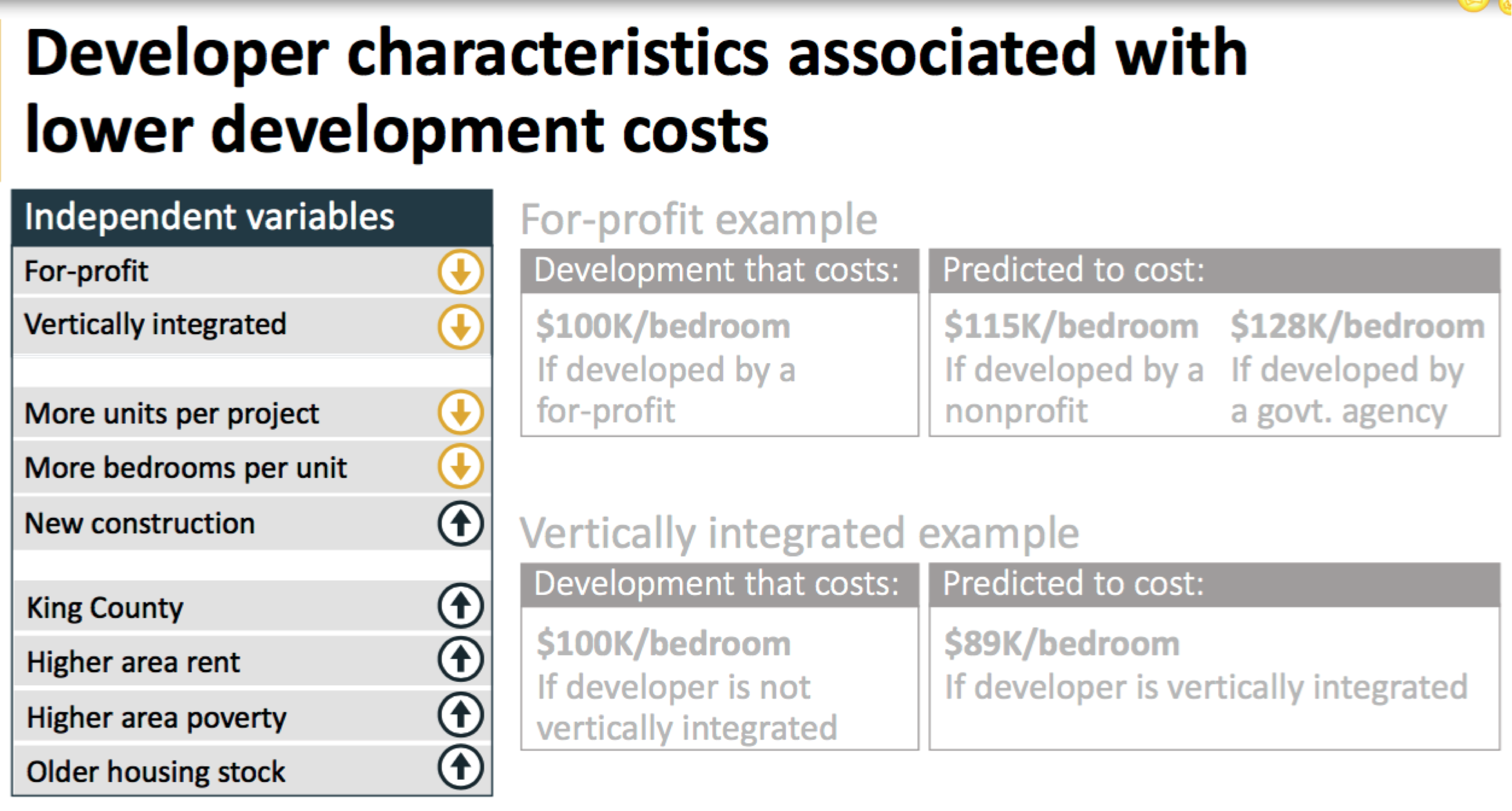
We also found that for-profit projects were substantially less costly to build than non-profit projects in our review of projects in the city of Seattle. And we also found that unit size may be an important factor. Here’s why.
When neighborhoods become more desirable because they are transit and amenity rich, two things happen. First, land becomes more expensive and so does per unit cost. While the JLARC study excluded land cost, we found that a second thing happens: renters in the market for housing are willing to sacrifice square footage for lower rents and proximity to amenities and transportation. These two factors drive down unit size, monthly rents, and increase the per square foot yield of projects for developers.
Even if land is subtracted from consideration of total development cost, for-profit projects are likely to create more, smaller units to create more competitive rents. This also means that when total development cost is divided by number of units, the cost per unit will be less. This size incentive is absent for both the producer and consumer of subsidized non-profit housing.
It is worth exploring further whether the price signals in the market are motivating efficiency in for-profit development while the lack of those signals is causing non-profits not to create more, smaller units in their projects.
Even if non-profits are building more 2 and 3 bedroom projects, if those units were incrementally smaller, allowing more units per project, more people could be housed for less cost per unit that larger units.
We appreciate the work of the JLARC team and believe this is a helpful step in creating fair and efficient programs to help people who need housing and to increase housing supply and access across the state. We look forward to working with you in 2019 to get closer to this goal.
Roger—
Articles:
Smaller Units Mean More Efficiency And Affordability If Local Government Allows Them
A Principled Way Out Of The Housing Crisis: Allow More Housing!
Washington State’s Housing Funds Aren’t Reaching Rural Workers Most In Need
More Density in Single-Family? We Tried That Once
Sometimes even I forget that I started my work on Seattle For Growth in an effort to expand supply of single-family housing. Yes, that’s right, my first assignment as it were was to support a solution to the “small-lot problem.” Back in 2012 and 2013 developers had found a way to subdivide single-family lots and build more single-family housing in single-family zones. Without getting into the detail (you can read this for more) it was an innovative solution to building smaller, more affordable homes in desirable single-family neighborhoods. The City Council wouldn’t tolerate that! So they banned the ability to build these small houses.
We proposed some predictability with a rule that would allow developable single-family lots to be as small as 80 percent of the average size of lots on a block. We fell back to 100 percent of the lot size. Here’s an analysis from way back then about how many new lots that would create and the difference between the two proposals:
| Zip Code | 80 Percent of Block Face | 100 Percent of Block Face | Difference |
| 98102 | 4 | 1 | 3 |
| 98103 | 222 | 49 | 173 |
| 98105 | 42 | 10 | 32 |
| 98107 | 42 | 9 | 33 |
| 98108 | 9 | 8 | 1 |
| 98109 | 45 | 11 | 34 |
| 98112 | 43 | 15 | 28 |
| 98115 | 86 | 20 | 66 |
| 98117 | 94 | 19 | 75 |
| 98118 | 102 | 28 | 74 |
| 98119 | 68 | 24 | 44 |
| 98122 | 101 | 26 | 75 |
| 98133 | 6 | 0 | 6 |
| 98144 | 85 | 25 | 60 |
| 98199 | 21 | 3 | 18 |
| Total potential new lots | 970 | 248 | 722 |
Here’s the letter we sent to Councilmembers urging they keep the 100 percent rule which we managed to get passed out of committee. The Council would gut this, and add even more prohibitions and rules that essentially suffocated most new single-family housing in single-family zones.
May 12, 2014
Dear Councilmember O’Brien,
Please support Council Bill Number 118052as amended and passed unanimously by the Planning, Land Use, and Sustainability (PLUS) Committee on May 6.
This legislation resolves issues associated with small lot legislation, allows the development of more new homes, and provides predictability for both neighbors and builders. The legislation creates height limits and set backs that ensure appropriate scale for new homes, and it includes the 100 percent rule.
We urge you to keep the 100 percent rule in the legislation if there is an attempt to amend the legislation to remove it at full Council on Monday, May 19th.
Here’s why we ask for you not to amend the bill. The 100 percent rule:
- Is a compromise 2 years in the making. We originally advocated an 80 percent rule that would have created more developable lots, but we accepted the 100 in discussions with you and staff;
- Would result in a modest number of new lots, about 250 new developable lots. The 80 percent rule could have created almost 1000;
- Includes a minimum lot size of 2500 square feet, set backs, and a height limit of 22 feet; and
- Is a new exception, but so are the 75/80 rule and dozens of other exceptions throughout the code. The purpose of exceptions is to allow our city to grow. Remember, most single-family lots are smaller than the zone (5000,7200, or 9600 square feet) they are in. Not granting exceptions would result in zero growth.
We believe this legislation will allow meaningful creation of new housing at a time when housing, especially single-family homes, is in great demand in our city.Please contact us with any questions or concerns.
Sincerely,
Roger Valdez
So now that the Planning Commission is on board, maybe some “urbanists” out there or champion of opening up single-family for more density will resurrect this idea. Take it an run with it!
Curb Your Enthusiasm on Single-Family Abolition and Stop Rising Costs and MHA
There has been a lot of breathless hullabaloo about Seattle’s planning commission report pointing out that single-family zoning is a problem. The headline for their report in the Seattle Times was Seattle’s housing crunch could be eased by changes to single-family zoning, City report says. Meanwhile, all sorts of noise has been made about some changes in Minneapolis to single-family zoning with Reason declaring, Minneapolis Strikes a Blow for Affordable Housing by Slashing Zoning Restrictions. Without going into the details of either, let’s curb our enthusiasm. Simply ending a zone doesn’t mean duplexes and triplexes will start popping up like toadstools after a heavy rain. Here’s why.
First, if tomorrow the Seattle City Council simply deleted the single-family zone and replaced it with the “you-can-build-triplexes–zone” someone would have to go and build all that new housing. Today’s existing zoning allows housing already. Density and typology aren’t necessarily the problem. When you add up all the time to get a permit, costs of utilities, and inspections, and a variety of other requirements we’ve listed before, the costs are prohibitive.
Part of this regulatory overreach includes things like unit size, bike and car parking requirements, and higher fees for using the right of way for construction and bigger set backs for overhead power lines. All of these things are constraining new housing, not typology or density. Even where density is allowed, building is taking up to five years to complete, and costing a lot more and that is before the imposition of impact fees and Mandatory Housing Affordability (MHA).
Second, this is a pipe dream. While the Commission is right to call out the problem of lack of housing supply in the face of rising demand (though they won’t call it that) that happens when land is used inefficiently, there simply isn’t the political will in Seattle to take this on. At this point, I think it would be far better to negotiate a cease fire with angry neighbors with the condition being that in all areas where dense multifamily is supposed to be allowed, that it be built without any comment, interference or hassle from anyone living in a single-family zone. Abolish design review!
I was anti-single-family when it wasn’t cool remember? From the Seattle Times:
Here’s his reaction to an urbanist who wrote that Murray’s single-family-neighborhood strategy failed because it didn’t reach out in friendlier terms. “You can’t go out to Jurassic Park,” Valdez sighed, “and sweet talk the raptors back into the cage.”
And remember also that the Council outlawed single-family housing in single-family zones when they squashed small-lot housing as a solution for more for sale housing product. If one considers the hassles created by single-family protests that have beleaguered many projects that are not even in single-family zones it would be clear that this whole conversation is misdirected. Yes, politicians need to say no to single-family neighbors. But I see no signs of them actually doing that in favor of the people that actually build and operate housing.
When I put these two realities together, I have to say that I am far more worried about the harm that MHA is going to do to multifamily projects than the tiny benefit of the Planning Commission acknowledging what everyone already knows: we have way too much land set aside for grossly inefficient single-family use.
Finally, if we needed an interim solution we could also create a tax not for people trying to build apartments and townhouses which is what MHA truly is, but a tax on single-family housing which we really want less of. “Oh but that’s illegal!” Right. So is MHA. If we want to illegally redistribute wealth, why not create a tax on lot size then use that money to subsidize renters. You want your big lot with one house? Fine. You’ll have to pay for it. That makes more sense than discouraging multifamily construction with a tax today while pining over a future when the Council abolishes single-family zones.
So please, stop goofing around with single-family zoning, at least here in Seattle, and put your energy in crushing forever the MHA program and the idea behind it, that new market rate housing is an impact that needs to be discouraged and punished with fees and taxes. The specter of MHA is far more concerning in the short term than the long-term benefits of an exercise in finally putting in writing what is plainly obvious about land use in Seattle.
